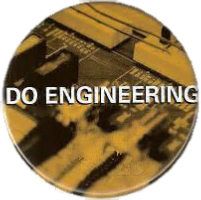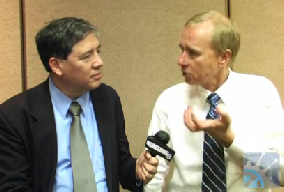Business Strategy



Direction for Your Business




The consulting services of Strategy Sanity are multi-
- Strategies, Programs, and even presentations can be analyzed and developed.
- Numerous Marketing and writing services are available.
- Extensive experience is the basis of many More abilities as well.
- In the technical arena, our strength is in embedded Processors, microcontrollers, digital signal processors, core processors, application processors, multi-
core processors, and their application in electronic equipment. - Traditional Market Research is performed in conjunction with Objective Analysis.
- Look into the Background and Biographies of our principals. Ask industry insiders or do a little Googling for our names, if there is not enough in the News and Events.
Site tends to look best using Firefox on a PC, but should look good on any browser and on smaller-
Copyright ©2007-

info@
to inquire further –
StrategySanity.com



Find our analysts at these important events, making presentations or working behind the scenes. Contact us to meet at the event or to get insights afterwards.
Below is a sampling of our views on processor chips, applications, and markets, as recorded in the Press or captured by others (see disclaimer at bottom):



All the finger-
"It's like they don't want to be together, and that's bothersome to me," said Starnes, who has been researching public-
Breaking up, Starnes said, will do no one any good. IBM Corp.'s business reputation would take a hit, he said. And the state would have to start all over again with another vendor to merge the data centers of 28 state agencies into two updated and secure facilities. There is no guarantee the next relationship will work any better, Starnes said. In the meantime, the agencies are stuck in a technological limbo.
In letter, IBM says state to blame for trouble with data center deal -

... The last year has seen essentially every major processor company add or expand multicore processors in their repertoire. A few are improved versions of earlier dual cores while others are fresh new multiple-
Multicore processors: Now a movement
-

"Sometimes when you deal with parts of the world where intellectual property rights are not held in as much high esteem as here ... the more in-
"PA Semi ... and the Intrinsity guys are a bunch of real smart people," Starnes pointed out. "It may very well be that Apple's trying to get higher performance out of their processors than they can out of standard CMOS (complementary metal-
Will the Feds Sour Apple's Juice? -

"Engineers will work it out... Just give us our toys and let us go to work."
Apollo: The Epic Journey that Launched a Generation of Engineers / Forum: Why I became an engineer
EETimes June 23, 2009

"The extremely low sleep current and numerous wake-
Microchip Technology Debuts nanoWatt XLP Microcontrollers With World’s Lowest Sleep Current Reuters April 23, 2009






News and Events Quotes References In Print Opinions Source Current Events Conferences Interviews




"Facing the challenges of power forces us to be far more efficient in everything about our designs," said analyst Tom Starnes of market research firm Objective Analysis. ...
Nonetheless, added Starnes, the chip industry has always found ways to meet its serious challenges and will do so now. "There’s so much business riding on continued advancements in semiconductors," he said, "that the problems will be resolved."
Will Power Problems Curtail Processor Progress? -



"It's a relief of debt burden for them, but it's not the magic bullet for them either," said Tom Starnes, an analyst for Objective Analysis. "It was something necessary for them to move on, but it's not going to help them create more technology for smartphones or next video games or tablets or anything like that."
It's the booming markets of microprocessor technology that Freescale needs to focus on, rather than relying on small, steady growth in its core embedded technology industry, Starnes said. A new management direction and focus can certainly help.
Freescale Semiconductor Launches IPO
-
May 26, 2011

The outlook for semiconductors and electronic end-
The push for green electronics has created an area of growth — and demand for semiconductors...
Chips and end-
Objective Analysis looks for a 10% decline for semiconductors in 2012, a mild recovery around the middle of 2013, and finally strong growth (over 20%) to follow in 2014. <full article>
Clouds Loom On The 2012 Semiconductor Horizon -

"Analog Devices is pretty solid in high-
"What might make some sense
[with the Lyric Semiconductor] acquisition is Analog Devices continuing to pursue cellular and communications technologies that often use exotic algorithms for extracting hard data out of messy real-
Probability chip start-
-
2/1/2021

Flash memory completely dominates microcontrollers (MCUs) now, but memory considerations have become more complex as the processors have advanced to 32-
Memory Considerations for Faster MCUs
-
DigiKey TechZone Jan. 18, 2012






"The concept that you can have a very small processor doing things like maintenance that doesn't require a big honker processor, and you can have another, specialty processor working maybe on graphics, and another one that's the mainstream one, and mixing them up, certainly in a system and now even in an SoC – you're going to see a whole lot more of that kind of approach..." <from a 06:30 video interview>
Trends in ARM-
-
engineeringTV.com Jan. 25, 2012
Consumer Electronics Show 2018 (CES)
Jan. 9-
Las Vegas, NV USA
Consumer Electronics Show 2017 (CES)
Jan. 5-
Las Vegas, NV USA
Embedded Systems Conference (ESC)
Dec. 6-
San Jose, CA USA
 ARM Technology Conference (TechCon)
ARM Technology Conference (TechCon)
Oct 25-
Santa Clara, CA USA
Freescale Technology Forum (FTF)(NXP)
May 16-
Austin, TX USA
February 22-
Austin, TX USA
Consumer Electronics Show 2016 (CES)
Jan. 5-
Las Vegas, NV USA
Nov. 10-
Santa Clara, CA USA
Embedded Systems Conference (ESC)
July 20-
Santa Clara, CA USA
Freescale Technology Forum (FTF)
June 22-
Austin, TX USA
Consumer Electronics Show (CES)
January 6-
Las Vegas, NV USA
ARM TechCon
October 1-
Santa Clara, California
April 9-
Dallas, TX
EE Live!
Embedded Systems Conference
April 1-
Intel Industry Analyst Summit
March 13, 2014
February 18-
Austin, TX USA
Consumer Electronics Show (CES)
January 7-
Las Vegas, Nevada USA
ARM Technology Conference
ARM TechCon
October 29-
Santa Clara, California
NIWeek
August 5-
Austin, Texas USA
Featuring LabView from
National Instruments
DESIGN West /
Embedded Systems Conference
 April 22-
April 22-
San Jose, CA
USA

April 25, 2013
San Jose, CA
USA
 October 22-
October 22-
Orange County, CA USA
September 11-
San Francisco, California USA
EETimes Virtual Conference
Approaching Multi-
September 30, 2010
Tom Starnes was conference co-
"MultiCore 101: The Architectural Options" and
"Software Development Tools for MultiCore Systems", plus hosted an interactive chat on
"Dodging the 11th-
ARMtechcon3
October 21-
Santa Clara, CA USA
The primary analyst and advisor for Strategy Sanity, Tom Starnes, was the Technical Chair for two of the three program tracks for the conference this year: "Internet Everywhere" and "MCUs & Tools".
Tom helped organize the technical program and hosted a number of industry panels during the conference, including:
"Mudwrestling: MCUs -
"Meeting Your Goals and Solving Design Challenges with ARM Technologies" was discussed among key Texas Instruments and ARM executives.
"Is Cloud Computing Just a Dream?" where Tom and high-
Real-
Computing Conference
The Seven Seas Washing over Embedded Systems
Keynote Presentation by Tom Starnes, Consultant and Industry Analyst
A number of trends in embedded applications are in motion that cannot be ignored. The advantages of convenience, consolidation, communications, connectivity and power conservation are reflected in the processor chips underlying today’s embedded systems. These issues may complicate real-
Austin, TX March 19, 2009
Get Slides
CES
The Consumer Electronics Show in Las Vegas gives insights to what the electronics industry is offering to excite finicky consumers. Get an overview and read take-
Design Automation Conference (DAC)
San Diego, June 4-
Tom Starnes presented
“Multi-
to open DAC in 2007.
Add'l commentary may be found at
Starne s -
s -
Tom Starnes (right) on TV
discusses Handheld PCs (PDAs) on CNBC’s "Closing Bell with Maria Bartiroma" back on March 12, 2002.
At the time, Intel was making a big market impact with its ARM-
Disclaimer: Quotes and references on this page are intended only as pointers to the original material, typically found on the World Wide Web, and are not intended to imply, usurp, transfer, grant, or exclude any rights of copyright. Be sure to establish appropriate copyrights before re-
Also note that these are quotes from sources that are typically out of our control and which may contain unintended or typographical errors, or may have been taken out of context of the original statement/writing of the spokesman/author. The comments are representative of information on hand and the nature of the conversation/writing at that moment in time. Certainly, now, these factors and influences have changed and may alter the analyst's view on the subject. Contact the analyst for updates based on the most current information.
Links provided were valid at one point in time but the dynamics of the World Wide Web can quickly render them as "dead" (404).
Brand names, trademarks, and logos remain the property of their respective owners.


Even More to Say ...
How Soon Can The New Decade Start? Electronic Design Jan. 7, 2010
ARM Achieves 10 Billion Processor Milestone
International Business Times Jan. 22, 2008
Freescale CEO announces his resignation
-
Getting past the hype -

"The design of a truly low-
Find your low-
-




Tom Starnes, an Austin-
Samsung Factory Shows Surprising Logic
-

"I literally asked a couple of MCU competitors about the renewed Renesas and they were unconcerned," said Tom Starnes, an analyst with Objective-
Clearly, Renesas' rivals don't want to pump up the Japanese firm. "On the other hand, what would you think competitors would say: 'Damn, that new Renesas is going to cream us or we've had a tiger team working on a defense for six months,'" the analyst said.
There are other issues beyond MPUs. "I have previously given a position that the (new) Renesas will have difficulty working with the maze of similar and overlapping products, organization, and resources," Starnes said. "I don't know that the current Renesas hasn't shown the sort of pruning that other chip vendors have gone through."
Renesas tips MCU roadmap, but are rivals worried? -
May 7, 2010
Merging with NEC's MCU operations would give this one vendor an unheard-
"Although there may indeed be merger talks between Renesas and NEC, we see little of the traditional benefits from a prospective merger between these two firms," Starnes said in a report. "It is no small chore to gain a benefit from the merger of two large microcontroller vendors."
There are more negatives than positives in such a deal. "Considering the broad offering of today's Renesas as well as NEC, most of the products seem to overlap rather than provide new synergies," he said. "Without paring down of overlapping families, it will be difficult to provide much financial gain."
There are other problems. "Manufacturing costs can be improved by driving more chips through the fabs, but first any newly-
Does Renesas-

"Technology evolves in spite of the economy," said Tom Starnes, analyst at market research firm Objective Analysis. "The excitement in the air at ESC [Embedded Systems Conference] Silicon Valley is a good indicator of the electronics industry's upturn. I'm sure the embedded engineering community went home from ESC armed with a wealth of valuable knowledge."
EE Times Group's ESC Silicon Valley 2010 Raises Bar for Electronics Industry Events UBM Press Release May 10, 2010
"The PSoC is the only architecture that extends the concept of program-
Cypress PSoC 5 With ARM Cortex-
IQ Online Sept. 15, 2009

"You no longer have to be a network expert to make use of wireless technology, and can develop an application in a matter of days," said Tom Starnes, Processor Analyst, Objective Analysis.
Synapse Registers 500th SNAPs User
Wireless Business & Technology Sept. 17, 2009

“Technology evolves in spite of the economy.”
Tom Starnes
May 10, 2010

Tom Starnes had an interesting panel at ARM Techcon this year. The topic of the panel was Cloud Computing but at the end the conversation turned into a look at the competitive battle between Intel and ARM.
ARM Techcon – Is Cloud Computing Just a Dream and Intel vs. ARM
GarySmithEDA Report October 2009

Tom Starnes, a Texas technology analyst, isn't sympathetic.
"It's one thing if last week you were selling shoes at Macy's, but shouldn't you expect all of the problems going in?" he asked. "You should assume you probably weren't born the last time they bought computers."
But he also faults public officials for unreasonable expectations.
"You start out with this big toad," he said. "Just because you bring in the private sector, we're there to help, but we can't fix it all right away." ...
Both Strichman and Starnes say public-
Lessons from two states' computer woes
-
Virginian-


Mobile-
Payment Applications Make E-
"This might be the approach being taken at Ixys, but they are not the only ones that are doing it," agreed analyst Tom Starnes, who follows the microcontroller market for Objective Analysis.
Starnes said there has been an ongoing trend to "bolt on" more analog and mixed-
Today, Zilog suffers from old offerings and an "antiquated ecosystem," Starnes said. "There is nothing wrong with the Z8 technology," he said. "It was great in its day. In 1981, they were a formidable competitor."
"In the late 1980s, Zilog lost the footrace," he said. "In the last five to 10 years, there have been a lot more competitors" in the MCU space.
Ixys revives Zilog amid a power trip
-

"Nonetheless, we have reports of many dedicated semiconductor employees returning quickly to their places of business after securing their homes," wrote Tom Starnes, author of a March 24th Objective Analysis report. "Meantime, the increasing threat of radioactive emissions from stressed nuclear power plants has many people scrambling to get to the far end of the island." ...
Rolling blackouts, whether planned or not, are also an issue for an industry whose delicate processes require sustained conditions, Starnes added. ...
"Nobody wants a $35,000 car to be parked on a production line waiting for a shipment of $5.00 microcontrollers that are programmed properly, or a hit Christmas toy to be out of stock until after the New Year," wrote Starnes. ...
"It is hoped that Japan's semiconductor manufacturing, as well as the Japanese people, can get back on their feet quickly," wrote Starnes. The world needs them.
Effect of Japan Quake on Semiconductor Industry Still Unclear -





"Most of the automobile plants in Japan are currently shut down, though those could be probably be turned back on once the people can be rounded up. But the supply of microcontrollers, analog and sensor products to the automakers and of all chips to the vast consumer electronics industry based in Japan could put a real dent in production if these components can't be produced for a period of time.
"There may be a zero-
Episode 4 – The Earthquake in Japan (audio-
-


"People are used to how cell phones operate," said Tom Starnes, an embedded processor analyst with Objective Analysis. "They used to be able to blame it on the bad Internet connection, the bad cellular connection, that sort of thing. 4G kind of takes away some of that blame. Now there are some pretty fast ARM processors out there, but are they the equivalent of Intel's 1-
Microsoft's Windows on ARM Better for Partners Than Us
-

The processor could be produced at multiple sites so supply won't be impacted by one or more sites going down, for example, Tom Starnes, an analyst at Objective Analysis, told MacNewsWorld. Or there could be enough built-
It's not likely that manufacturers can turn readily to alternative suppliers, Starnes said.
"Nobody will be able to switch over to a different processor in less than six months unless a parallel design has been underway for a long time, and who has the resources for that?" Starnes asked.
A Tale of Two iThings -

Microcontroller vendors have been taking care of your connectivity and communications needs. More and more serial channels, communications methods, and networking peripherals have been brought into the MCU as the market has called for it. Along with the hardware implementation, the chip vendors have been assembling the software that makes it work. Third-
Your MCU is Just Starting to be Connected
-
Digi-

Researcher Tom Starnes of Objective Analysis explained, "Of the $300B of semiconductor chips sold last year, nearly $50B were sold to or within Japan, but nearly 25 percent of the world's semiconductor production capacity is in Japan when you look at total square inches of silicon processed, so this is a vital region to the global industry. Additionally, over 60 percent of the silicon wafers that are the starting point for making a semiconductor chip are made in Japan, and these are sold all over the world."
Pro Audio Reacts to Japan Disaster -

"These microcontrollers are different in small but important ways," said Tom Starnes, an analyst at Objective Analysis, a technology research firm. "That makes it very difficult to switch to alternate suppliers, at least not quickly." Switching could take six months or more, analysts say.
A Japanese Plant Struggles to Produce a Critical Auto Part
-
The New York Times Apr. 27, 2011

Simply replacing MCU parts from one supplier to another is easier said than done. "I have heard of (MCU) shortages, indeed some from Renesas," said Tom Starnes, an analyst with Objective-
Microcontroller supply chain is out of control -

"Medfield is a small step closer," Tom Starnes, an analyst at semiconductor research firm Objective Analysis, told TheStreet. "[But] it's not like the grappling hook is over the wall and you know that you're in."
"The reason why ARM has done so well is because they are much more thrifty in terms of battery performance," said Starnes. "You can get away without screaming performance, but the battery needs to last all day."
Starnes, though, was unmoved by this [Smart TV] news. "To me, it's like fine, great, but who is buying that stuff?"
Has XScale left a bad taste for Intel? Quite possibly, says Starnes. "They did a superb job [with XScale] but the market didn't buy into it," he said. "I think that they are still struggling with that."
Intel Nips at Smartphone Market
-

"Products like microcontrollers and DSPs can't simply be swapped out for another chip, whether from the same vendor or another," said Tom Starnes, an embedded processor analyst at Objective Analysis in Austin, Texas. "The programs aren't easily transferable between processors, and even changing other chips like analog may introduce cost, quality, or reliability issues not originally anticipated."
Two Weeks After Japan Earthquake, IT Industry Faces Hurdles -
"The disrupted electricity, water, and transportation systems [following Japan's 9.0 earthquake] are certainly going to take some time to get back on track," said Tom Starnes, an analyst with Objective Analysis, in a report circulated Wednesday. "There are only so many spare parts lying around with which to fix things. Even far away from the earthquake zone, rolling electrical blackouts, scheduled or not, are hampering normal life."
{from Editor’s lead-
"Semiconductor manufacturing requires consistent, high-
On Semi says two fabs still down
-


Tom Starnes, senior analyst for Objective Analysis, added that the USB design itself is cumbersome — what he calls "awkward compatibility."
"The shoulders on some USB plugs and devices prevent insertion in some devices and if you try to stack them or put them in too tight a space, then they don’t fit — kind of the reverse problem of the HDMI connector," said Starnes.
USB: 3.0 Taking Hold and Gearing for the Future RTC Magazine December 2012

Tom Starnes, embedded processor analyst at Objective Analysis, believes that Microchip has always done a good job "of making their MCUs accessible to 'the little guy' with excellent support and lots of little development kits." In Starnes' view, serving the smaller customer is "more of a mission at Microchip," while it's often a secondary goal to most vendors who concentrate almost exclusively on their biggest clients.
Talk from the hip at Microchip
-

Numerous MCU vendors have been using ARM-
Kinetis L Challenges 16-
-
July 16, 2012


It is disheartening to have to point to a poor economy across the globe as a significant drag on the health of the electronics industry for four years running… If the buzz about tablets and smartphones fires up sales as Christmas gifts – a very likely scenario – this could severely impair sales of something that looks like a productivity tool, even if it is a little more fun, e.g. an UltraBook with a touchscreen on Windows 8. Is the PC becoming the WC – the Work Computer?… Many silicon vendors have backed away from the cutthroat smart phone industry…
The last year saw bigger talk given to ever-
Ancient Aliens Fail: Electronics Industry Looks to 2013 -

32-
Microcontrollers have continued to play a large role in managing and controlling power consumed by other components and systems while, like other electronic components, reducing their own power consumption. … Peripherals are still blossoming as MCUs [and] the coming year may see some traditional MCU leaders, like Freescale and Renesas, return to their former glory, while newer upstarts like Silicon Labs and Energy Micro continue to make their mark as well. <entire article, by subscription>
32-

"Inserting the popular Cortex-
Cypress PSoC 4 architecture claims the industry's lowest-
-


"ARM was being cagey about a variety of specifics about their current endeavor into 64-
Next Stop for Windows 8: 64-

Indeed, the issue of power consumption coupled with a new challenger in ARM in the server space has forced Intel to rethink its strategy, said Tom Starnes, a microprocessor analyst also with Objective Analysis.
"Intel was traditionally focused on performance, performance, performance, but there are apps that don't need the highest screaming performance and power consumption has become a big issue," Starnes said.
Meanwhile, ARM has improved its chip performance and it is an architecture known to be conservative in power consumption, Starnes said.
"They have pushed their way into the low end server business and it's a business that Intel wants to protect," Starnes said.
… Plus, ARM is at a disadvantage in the Intel-
Intel roadmap adds low power, high density chips for micro servers -

Tom Starnes, analyst at Objective Analysis, which focuses on semiconductor market research, said firms can still deliver differentiated products with the ARM architecture...
"There is a built-
Starnes said he was impressed when [Gregg] Lowe was hired [as CEO]. The executive has a good background as an engineer, he explained. Texas Instruments, like Freescale, was built on solid engineers, and Lowe will command respect from the rank and file employees, Starnes said.
Freescale Semiconductor looks to ARM strategy -

2014 should be a banner year for semiconductors with revenue forecast to grow 20% or more. Demand is strong despite softness in PCs as consumers shift spending to smart phones and tablets. Meanwhile Things on the Internet and sensors of all kinds will further drive markets and new applications.
In 2013, smart devices morphed into the Internet of Things (IoT), an all-
Ultimately these Things are extending connectivity a little closer to person, possibly more conveniently. Rather than building humanoid robots we may be shifting to mechanizing the human being. One wonders how much augmentation the normal human can tolerate – or afford. <entire article>
Forecast for Semiconductors and Things in 2014 -










"The best thing to get the economy going is for people to spend their money. Prices aren’t going to get any better." – Tom Starnes














According to Tom Starnes, an analyst at market research firm Objective Analysis, companies like Microchip Technology Inc. and Freescale Semiconductor Inc. offer microcontrollers that incorporate some analog circuits. They tend to be slower than the leading-
"When you get to where you are putting a lot of analog circuits on the device, it's really hard to get 100-
Starnes noted that Silicon Laboratories Inc. also aggressively markets mixed-
Renesas readies mixed-
-
ARM-
Chip startup Smooth-
Austin American-
|
Like the original iPod, iPhone, and iPad, and Macintosh, these voice- Note, however, the magnitude of the companies behind the voice- |
|
2020 and Hindsight: Nest, Ring, or Echo? December 30, 2019 |
|
|
|
High Tech continues to march forward, dependably, as it always has: faster, better, cheaper, higher integration. Today, the advance of technology is one of the few things that can be counted on in a positive light. The protection of intellectual- Corporate consolidation is slowing a bit, with a number of companies in the electronics industry having already merged. Some acquisitions have been blocked, slowed, or otherwise withdrawn. The global nature of our industry can make government approval difficult. Alliances and partnerships between companies are vital, with technology standards benefitting all who make use of them. The reach of Android has grown tremendously. While some parts of the business have disaggregated, many companies pursue further vertical integration, with nearly all engaging more heavily in software… <entire article> |
|
The Digital World Faces Uncharted Waters, Too |
|
|
|
"Essentially, every electronic application now reaches out to the internet, and there are so many people with nothing better to do than to hack into someone else’s good work to be mean or for profit, that it’s imperative that designers build an adequate level of security into their products today," notes Tom Starnes, an analyst at Objective Analysis. "Unfortunately, security is a utility, the quality of which is hard to quantify, and isn’t as fun as pimping up a User Interface. However, as engineers it is our duty to protect users of our creations from unseen danger." |
|
Get Ready for a Wealth of Embedded Design Hardware and Software Options for 2018 - |
|
|
|
Tom Starnes, Chief Processor Analyst, Objective Analysis: "It shouldn’t be a surprise to anybody watching the industry for the past couple of decades that Microchip is doing a great job providing MCUs for embedded systems. The survey results highlight their broad use, especially when combining the PIC, AVR, and at least some (the only MCU) portion of the MIPS devices – even though the architectures are essentially proprietary and all are off- |
|
Developers are Chasing AI, Open- - |
|
|
|
"A robot can build a product in any country for about the same price — it’s only human labor that has a highly variable rate from country to country…" <entire article> |
|
How Will Politics Impact the Semiconductor Industry and Overall Business Climate? |
|
|
|
Tom Starnes, analyst with Objective Analysis, notes, "One country's loss is another’s gain as corporations try to hold on to as much of their revenues as they can in very complex and competitive markets for sophisticated technology. Meantime, the very- |
|
These Trends Will Shape Embedded Technology in 2017 |
|
|
|
ARM has done a superb job of running its business over all these years, and all efforts should be made to stay the course. A large infusion of cash and the ability to hire 300 new people a year would allow much faster progress to be made in the following areas: 1) Addressing emerging applications; 2) Enhancing software and standards support (key to making the hardware attractive) and 3) Ramping up performance to serve the highest performance applications. A 15%- |
|
The Soft Banking of ARM |
|
|
|
The possibilities of the IoT will inspire and enable widespread technological innovation over the next many years, providing the drive that will keep electronics and the semiconductors at their heart as very vibrant industries. |
|
An Objective Analysis of the Industry Outlook for 2016 - Electronic Design Feb. 8, 2016 |
|
|
|
The promise of the IoT will finally explode when a vast array of products built by many different makers exhibit true interoperability through the network, but today the complete vision still seems a few years off.… Many [imaging opportunities] will be high- Consider the risk of so many companies counting on the IoT and on China for their growth, and the ramifications of stumbling of today’s large, intertwined markets. <entire paper> |
|
2015 Reflections and 2016 Outlook - |
|
|
|
Microchip [Technology]'s continued focus on 8- "In many ways, the competition has almost abandoned 8- Starnes pointed to Microchip's "consistent strategy and execution," as well as Sanghi's steady hand, as a linchpin for success. … Part of the company's success is aligned with the maker community, said Starnes. "In many ways that is a significant type of customer - |
|
Microchip Buoyed by SMSC to Record Results - |
|
|
|
Tom Starnes, a processor industry analyst at Objective Analysis, told us that neither the impending merger nor the possibility of having a new player in the chip business is the most interesting thing about the announcement that would split off portions of their chip- The most interesting thing, he said, is that [Fujitsu Ltd. and Panasonic Corp.] announced the same merger - "Fujitsu and Panasonic have both been on the radar for a long, long, long, long time," Starnes said. "They've both done some good things in the past, but we haven't really seen anything new in the way of microprocessors out of them for… forever. When you put them together, there could be some cost cutting, but it's hard to see any synergy there." ... The new company will focus on producing semiconductor products for growing markets, including cloud computing, medical devices, the Internet of Things, and big- "They have almost nothing to say about products, and that's what you want to hear - "They're selling off expensive resources, and maybe that's good, but if they're not just trying to get rid of costs and headcount and everything else, you have to wonder if these guys are ending up in a good position," Starnes said. "Is what they're doing going to break open that equation, or are they just going to be the 9th or 10th ones to climb on the same bandwagon?" |
|
Panasonic/Fujitsu Venture More Divestiture Than Investment - |
|
|
|
Tom Starnes, Objective Analysis' processor expert, tells us that the wireless handset and tablet businesses consist of two leading OEMs followed by many other vendors that he says are: "tumbling in the dust." He points out a dichotomy in the makeup of the phones that Apple sells and those sold by Samsung. Apple gets its 15% market share with just three models of smartphones. While Samsung takes 30% of the market, it must produce 150 models of smart phones to do so. Samsung uses a broad range of applications processors designed by Texas Instruments, Qualcomm, and NVIDIA in their myriad smart phones. All the while, Samsung's semiconductor operations designed its own applications processor, called Exynos, but the company’s cell phone organization has only recently started to use it in Samsung's own mobile devices [and] had no success selling the processor into other vendors' handsets. |
|
Is Samsung Losing at Economies of Scale? - |
|
|
|
The designers of our modern electronic systems and digital services must continue in their role of responsibility for building the best products while being good stewards for their safety and security. Unfortunately, there are growing numbers of people intent on devising new ways to circumvent preventative measures, so staying on top of security is a never- |
|
IoT Security Getting Well- Electronic Design Jan. 10, 2018 |
|
|
|
Tom Starnes, Objective Analysis processor analyst, questions whether the IoT frenzy is anything more than fancy phrasing for the natural technological evolution. "It's hard to see any company that's not claiming they're a part of the Internet of Things," he told IBD. "I look at it as an evolution of what electronics has been doing all along. We used to call it embedded processing." Simply put, engineers have long strived to make machines "talk" to one another, he said. ... Objective Analysis' Starnes is more certain society will embrace the Internet of Things — maybe even to its own detriment. "People are letting their privacy go," he said. "Are they aware of the dangers? Are they aware of the implications? Probably not, no. ... Is it going to impede adoption? It doesn't look like it is." |
|
Apple, GoPro, FitBit Chip Suppliers Enter IoT Melee - |
|
Not so fast, said Tom Starnes, semiconductor industry analyst at Objective Analysis. He points out that most of these [process] announcements have more to do with standard microprocessor architectures and are unrelated to the requirements of Internet of Things (IoT) devices. "These are mainly digital systems and while scaling to such geometries there is not easy, it is child's play next to what is necessary in microcontroller- "We will eventually have a viable market for MCU- |
|
Scaling Down Semi Process Nodes for IoT Apps |
|
|
|
Like server processors, FPGAs are a high- |
|
Intel Really Set to Buy Altera FPGAs - |
|
|
|
"Special attention is needed in an MCU environment where there are numerous opportunities for real- |
|
ARM Injected with Low Power API - |
|
|
|
"I always look at these mergers and acquisitions from a couple of points of view, usually with the users of the companies' products —the OEMs that design electronic systems from the chips — foremost in my mind ... whether these two companies will be able to do something together that they couldn't have done when apart <and> what overlap versus synergies coupled with reaches into new markets do the joined companies have?" - |
|
Q&A: Tom Starnes Examines the NXP- |
|
|
|
NXP executives will have to carefully balance the key personnel at original NXP and the old Freescale, as well as the products they produce, to keep the growth positive at the new company. This is often the downfall of such mergers. |
|
- |
|
|
|
The plethora of these new Things are unmanned end- ADAS systems are very useful individually,…making cars safer to drive …and are attractive enough to justify their cost to the purchaser, especially in the higher- |
|
Is 2015 the Year for IoT, ADAS, 4K UHD, or Surround Cameras? - |
|
0 |
|
The smart phone has become a key platform for expanding the use of all kinds of products. The phone may remotely control or accumulate data from the product, resources in the phone may perform special processing on the data, and cloud services may be accessed through the cellular network. The phone has become the always- Smart phones and tablets have also introduced new kinds of user interfaces. The touch screen is now a staple, giving us the variety of a PC screen, unencumbered by the mouse. <entire article> |
|
- Mouser Electronics Feb. 4, 2014 |
|
|
|
The variety of cell phones models being sold by leaders Samsung and Apple reveals very different approaches to their business.… So many factors all point to the same conclusion: it costs less to serve a market with a few robust products than with many.… A person has to wonder how Samsung can be as profitable with 150 phone models as Apple is with just three. <entire article> |
|
Volume Skews Smart Phone Leaders - |
|
|


